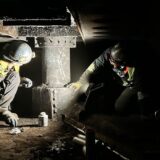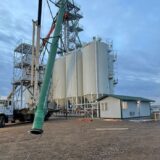Navigating Safety Protocols in Steel Erection
Steel erection is a critical component in the construction industry, demanding strict adherence to safety protocols to ensure the wellbeing of workers and the success of projects. Given the complexity and risks involved, it’s essential to be well-versed with the various safety measures and guidelines designed to prevent accidents and injuries on the job site. This blog provides an easy-to-read guide on navigating these protocols effectively.
Understanding the Importance of Safety Protocols
Safety protocols in steel erection serve as the blueprint for mitigating risks and ensuring that all operations proceed without incidents. They help protect workers from potential hazards such as falls, structural collapses, and the mishandling of heavy equipment. It’s crucial that companies foster a strong safety culture, engaging the entire workforce in adhering to these guidelines ahead of operational performance. Workers should receive comprehensive safety training regularly to refresh their understanding of these critical protocols, ensuring everyone is equipped with the latest safety practices for steel erection.
Providing clear communication about the safety measures in place helps create transparency and trust on site. An inclusive culture where every employee feels responsible and accountable for their safety and that of their peers can dramatically reduce accident rates and improve compliance. Credence Construction Ltd. outlines that a well-organized workplace is pivotal. Workers should consistently report unsafe conditions, which enables management to take swift corrective actions, ultimately safeguarding everyone involved.
Key Safety Guidelines for Steel Erection
From securing personal protective equipment (PPE) to ensuring that safety nets and guardrails are properly installed, following these guidelines is crucial for preventing workplace accidents. This section outlines the primary safety protocols that every steel erection site should implement. Notably, fall protection at heights exceeding six feet is imperative, according to updated OSHA standards Subpart R.
Moreover, safety does not stop with equipment—ergonomic safe practices, site layout design, and careful planning on site safety measures revolve around creating a secure logistical blueprint for operations. Workers must wear the appropriate PPE tailored for their specific tasks to prevent unforeseen injuries and maintain site productivity for safe steel erection. Regular checks of these guidelines help identify gaps and address them in due time.
Training and Certification Requirements
Proper training and certification are essential for all workers involved in steel erection. This ensures that they are well-prepared to handle the equipment and follow safety protocols effectively, ultimately minimizing risks. Training programs should cover a range of topics from proper equipment handling to hazard awareness and emergency response. The knowledgeable workforce bolstered by ongoing training not only enhances safety but also improves overall work quality.
In-depth training fosters a culture of accountability and vigilance, where every worker recognizes the importance of adhering to safety protocols. For an industry as demanding as steel erection, having employees that are sharp and well-trained translates directly to fewer errors and faster project completion times. The importance of utilizing tech-driven training tools can offer even greater insights into safe practices and help tailor programs specific to different site requirements.
Technological Advancements in Safety Measures
Advancements in technology have introduced new safety measures that enhance traditional protocols. From drones for site inspections to wearable tech for monitoring workers’ health, innovative solutions are providing new layers of protection. Utilizing real-time data collection tools enables quicker decision-making and timely issue resolution, which can prevent small problems from growing into major safety threats.
Furthermore, integrating IoT into site operations permits enhanced safety visibility across large or complex sites. This technology supports proactive interventions, offering insights into equipment status and site conditions before problems arise. Automated monitoring systems replace tedious manual observations, reducing human error risks and increasing focus on strategic safety initiatives. The smart application of these technologies can transform workplace safety by delivering both predictable and unforeseen future developments.
Emergency Preparedness and Response
Despite the best-prepared protocols, emergencies can still occur. Having a well-defined response plan for potential scenarios is key to reducing harm and ensuring that everyone knows how to react swiftly and effectively in case of an incident. Emergency protocols should detail the lines of communication, ensuring clear direction and support through both planned drills and unplanned events.
An effective emergency plan should designate roles and responsibilities across the workforce, ensuring all workers understand their part in responding to workplace incidents. Regular emergency drills serve to reinforce these structures, making them more instinctual over time. It’s equally important to review and improve these plans periodically in response to past drills, new risks, or changes in site geography or staff roles.
Prioritizing Safety in Steel Erection
Safety should always be the foremost priority in steel erection. By understanding and implementing these protocols, workers and supervisors can create a secure environment that not only protects everyone involved but also contributes to the seamless progression of the project. Staying informed and vigilant allows for the mitigation of risks and fosters a safety-first culture that upholds industry standards. Learn more about essential safety measures in industrial construction to keep your team protected.



